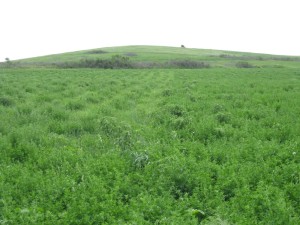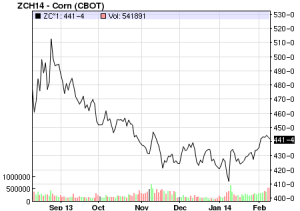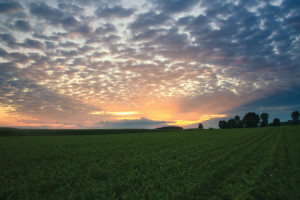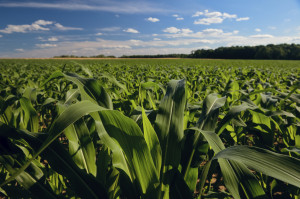 It’s a question that occupies every farmer and landowner’s thoughts on a regular basis: What is the return on investment of my farm operation? Am I making the right decisions when it comes to my input costs? Am I marketing my crops effectively? These are important questions, and rightly so—any successful business owner knows that the key to making money and staying in business for the long term involves a high degree of attention to this key aspect.
It’s a question that occupies every farmer and landowner’s thoughts on a regular basis: What is the return on investment of my farm operation? Am I making the right decisions when it comes to my input costs? Am I marketing my crops effectively? These are important questions, and rightly so—any successful business owner knows that the key to making money and staying in business for the long term involves a high degree of attention to this key aspect.
A simple definition of return on investment (ROI) is “the ratio of money gained or lost on an investment relative to the cost of the investment.” This straightforward calculation allows one to analyze and compare investments in order to identify the best alternative for their situation. In essence, it helps one determine the best “bang for your buck.”
So, what is the best plan for ensuring a healthy farm ROI? First, it’s important to be mindful of all the different costs associated with owning and operating a farm. Simply staying on top of input costs, yields, and market prices is the foundational component for success. For many farmers and landowners, closely weighing the options regarding seeds, chemicals, fertilizer, and equipment is necessary when determining the return on investment.
Second, it’s often necessary to take the actual ROI into account when making farming decisions, because while a certain decision may seem too pricey initially, the actual ROI makes it a worthy investment. A good example of this is in precision technology, such as a GPS system for farm equipment, which can initially be quite expensive. This expense may be a hindrance, but by calculating the amount of planting overlap that could be cut as a result of a good guidance system, and the fuel and input costs associated with it, it could be determined that the cost of the guidance system could be covered in the first year of operation.
For landowners, and especially for landowners who have bought land as an investment, determining the ROI is no less important. They wonder whether land values will remain high, or if they will start to level off and even see a decrease. While experts offer varying opinions about the future prospects of land values, all agree that farmers and interested investors should carefully assess land values and farm financial health before doing any sort of investing.
According to Purdue Extension Agriculture economist Craig Dobbins: “The next couple of years for farmland values are going to be a little less certain than the last few years have been. Commodity prices have come down significantly in the last year, so these large returns we’ve kind of become accustomed to for the last few years have now shrunk. The probability of farmland values staying flat or seeing a small decrease is much bigger than the probability that we’re going to see another double-digit increase.” As such, Dobbins cautions prospective land buyers to make certain that there are sufficient cash reserves to withstand a downturn for the next two or three years, and if so, to go ahead with the purchase.
If you need help determining the ROI for your farming operation, contact UFARM. We have years of experience in helping landowners make the most of their land asset.
United Farm and Ranch Management (UFARM) is a Nebraska-based company devoted to meeting landowners’ needs. UFARM offers a full range of Nebraska land management services, including real estate sales, rural property appraisals, consultations and crop insurance. UFARM has operated in Nebraska since the early 1930’s.
Sources:
Frye, Justin. “Consider Expense vs. Return On Investment.” Farm and Ranch Guide. 12 Oct. 2013. Web. 12 Jun. 2014.
Stewart, Jennifer. “Farmland Value Shift Signals Need for Cautious Purchasing.” Purdue Agriculture News. Purdue University. 13 Feb. 2014. Web. 12 Jun. 2014.

 After multiple extensions and delays, the Agricultural Act of 2014—more widely known as the Farm Bill—was finally passed by Congress and signed into law by the president in February. Since then, it has been up to the USDA and other agencies to integrate the changes the bill contains, to work through the specific rules for the programs, and to oversee its implementation at ground level. Farmers themselves are interested in the portions of the bill that have changed in regard to agriculture policy and how these changes may affect them.
After multiple extensions and delays, the Agricultural Act of 2014—more widely known as the Farm Bill—was finally passed by Congress and signed into law by the president in February. Since then, it has been up to the USDA and other agencies to integrate the changes the bill contains, to work through the specific rules for the programs, and to oversee its implementation at ground level. Farmers themselves are interested in the portions of the bill that have changed in regard to agriculture policy and how these changes may affect them. When it comes to deriving an income from their farmland, landowners have a variety of options from which to choose. For many, farming it themselves is suitable. For others, leasing their land to others to farm is a good option. Another alternative for many landowners is to enter some of their land into the Conservation Reserve Program (CRP).
When it comes to deriving an income from their farmland, landowners have a variety of options from which to choose. For many, farming it themselves is suitable. For others, leasing their land to others to farm is a good option. Another alternative for many landowners is to enter some of their land into the Conservation Reserve Program (CRP).



 Demand continues to grow in the nation for organically produced foods and grains, and many farmers and landowners across the nation are joining the growing organic trend. Nebraska farmers have also been taking notice. The increasing demand for certified organic products and food are opening up new markets, and many Nebraska farmers are stepping in to fill the niche. Have you ever considered the benefits of using your land to produce organic grains or foods? Would organic farming be a good fit for you and your farm?
Demand continues to grow in the nation for organically produced foods and grains, and many farmers and landowners across the nation are joining the growing organic trend. Nebraska farmers have also been taking notice. The increasing demand for certified organic products and food are opening up new markets, and many Nebraska farmers are stepping in to fill the niche. Have you ever considered the benefits of using your land to produce organic grains or foods? Would organic farming be a good fit for you and your farm?
 It’s a popular topic at every rural coffee shop: Will land values remain this remarkably high? It’s a good question. With values that have been rising steadily over the last 20 years, and that have seen even larger gains in the last two to five years, farmers and landowners wonder if conditions will remain in place that will maintain these rates for the foreseeable future.
It’s a popular topic at every rural coffee shop: Will land values remain this remarkably high? It’s a good question. With values that have been rising steadily over the last 20 years, and that have seen even larger gains in the last two to five years, farmers and landowners wonder if conditions will remain in place that will maintain these rates for the foreseeable future.